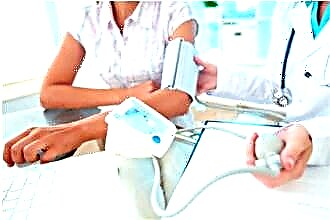Catarrhal otitis media is a common ENT disease that can be acute or chronic. A pathological process arises under the influence of pathogenic microorganisms that penetrate into the ear cavity from the respiratory tract. In the absence of adequate treatment and the further spread of the inflammatory process, persistent hearing loss develops.

Most often, catarrhal otitis media occurs in a child in the first year of life. This is explained by the structural feature of the Eustachian tube. In children, the auditory tube is short and wide, as a result, pathogens easily penetrate into the ear cavity and cause inflammation.
ARI, ARVI, rhinitis, kidney disease, vitamin deficiency, adenoids, complete absence or improper hygiene procedures, hypothermia, decreased function of the immune system, improper artificial feeding during the neonatal period, the presence of a foreign body in the ear - all this can provoke the development of inflammation in the ear cavity.
Symptoms
Catarrhal otitis media in children is accompanied by such signs as ear congestion, an increase in temperature indicators, painful sensations of a pulsating nature in the affected ear, hearing impairment, pain can radiate to the teeth, temples, and the back of the head. The pathological process most often affects one ear, bilateral inflammation develops in rare cases.
Very often, the development of catarrhal otitis media is accompanied by autophony - a person hears his own voice in the affected ear. Gradually, the middle ear cavity is filled with a serous mass, the autophony decreases, and the noise in the ear, on the contrary, becomes more pronounced.
A characteristic manifestation of catarrhal otitis media is severe pain that occurs when the tragus is pressed. With the further development of the inflammatory process, the painful sensations increase.
The addition of shooting pains further aggravates the patient's condition, there is malaise, increased fatigue. Body temperature can reach 38 ºС and above. In this state, the child refuses to eat, is indifferent to toys, does not make contact.
As the symptoms of intoxication of the body intensify, the state of health worsens, vomiting and seizures may develop.
In the absence of adequate treatment at this stage, acute catarrhal otitis media in a child turns into a purulent form.

Therapeutic activities
Otoscopic examination reveals characteristic changes in the ear cavity:
- the vessels of the tympanic membrane are full of blood;
- the membrane itself is hyperemic and retracted, its mobility is impaired.
Due to the retraction of the tympanic membrane, the mobility of the auditory ossicles is disturbed, which leads to the development of hearing loss.
Catarrhal otitis media itself is a variant of an acute inflammatory process in the middle ear. Acute catarrhal otitis media occurs in children against the background of viral or bacterial diseases.
If the course of the disease is accompanied by an increase in temperature values, bed rest at home is indicated. If there are signs of a developing complication (in particular, intracranial), emergency hospitalization is required.
Treatment of acute catarrhal otitis media in children, first of all, should be aimed at eliminating painful sensations in the child. For this purpose, ear drops with an analgesic effect are used, for example, the drug Otipax. It not only relieves pain, but also has an anti-inflammatory effect.
Thermal semi-alcohol compresses, a heating pad, a blue lamp can be used. However, at elevated body temperature, warming procedures are contraindicated. Heat will further increase the temperature and only aggravate the patient's condition.
Also, warming compresses are categorically contraindicated if the catarrhal stage of the inflammatory process has already passed into purulent otitis media.
To normalize temperature indicators, antipyretic drugs are used (for children, Paracetamol is the safest).
An important condition for recovery is the restoration of the patency of the Eustachian tube. For this vasoconstrictor nasal drops (Sanorin, Naphtizin) are used. After the use of vasoconstrictors, nasal drops with a bactericidal effect (Protargol, Collargol) are dripped into the nose. It is not recommended to flush the nasal passages on your own, this can aggravate the course of otitis media.
vasoconstrictor nasal drops (Sanorin, Naphtizin) are used. After the use of vasoconstrictors, nasal drops with a bactericidal effect (Protargol, Collargol) are dripped into the nose. It is not recommended to flush the nasal passages on your own, this can aggravate the course of otitis media.
Antibacterial agents are able to stop the inflammatory process in a short time. But the drugs of this drug group should be used strictly according to the doctor's prescription.
Treatment of catarrhal otitis media in children with the use of antibiotics (most often Amoxicillin, cephalosporins) is mandatory in the following cases:
- when otitis media occurs in a child under 2 years old;
- when the body temperature rises to 39 ºС;
- with severe painful sensations.
The duration of antibiotic therapy should not exceed 10 days.
Strictly on the recommendation of a doctor, antibacterial agents can be used for 2 weeks.
An effective treatment for this disease is catheterization of the auditory tube. During the procedure, air is injected into the tympanic cavity under pressure, this allows you to restore the patency of the ear canal. Catheterization is performed under local anesthesia.
Preventive measures
To prevent the development of catarrhal otitis media, it is necessary to timely treat diseases of the ENT organs (ARVI, ARI). In order to minimize colds and viral diseases, it is necessary to lead a healthy lifestyle and strengthen the immune system. Tempering procedures, fortified food, moderate physical activity will help in this.
Some people have an individual predisposition to developing catarrhal otitis media, which often occurs after being in water. In this case, to prevent the development of otitis media in the summer, it is recommended to use ear drops with an antiseptic effect. The medicine should be instilled into the ear canal after each bathing in the pond.
In order to reduce the risk of developing an inflammatory process in the ear cavity in a newborn, mother should practice free natural feeding, during which the baby is in a slightly elevated position.
Another important point is the process of blowing your nose, very often this procedure is carried out incorrectly. Parents cover the wings of the child's nose and force him to blow his nose into a handkerchief. In this case, the child's mouth is closed and some of the mucus can enter the ear cavity and provoke an inflammatory process in the middle ear. To prevent the development of otitis media during blowing the child's mouth should be slightly open.



